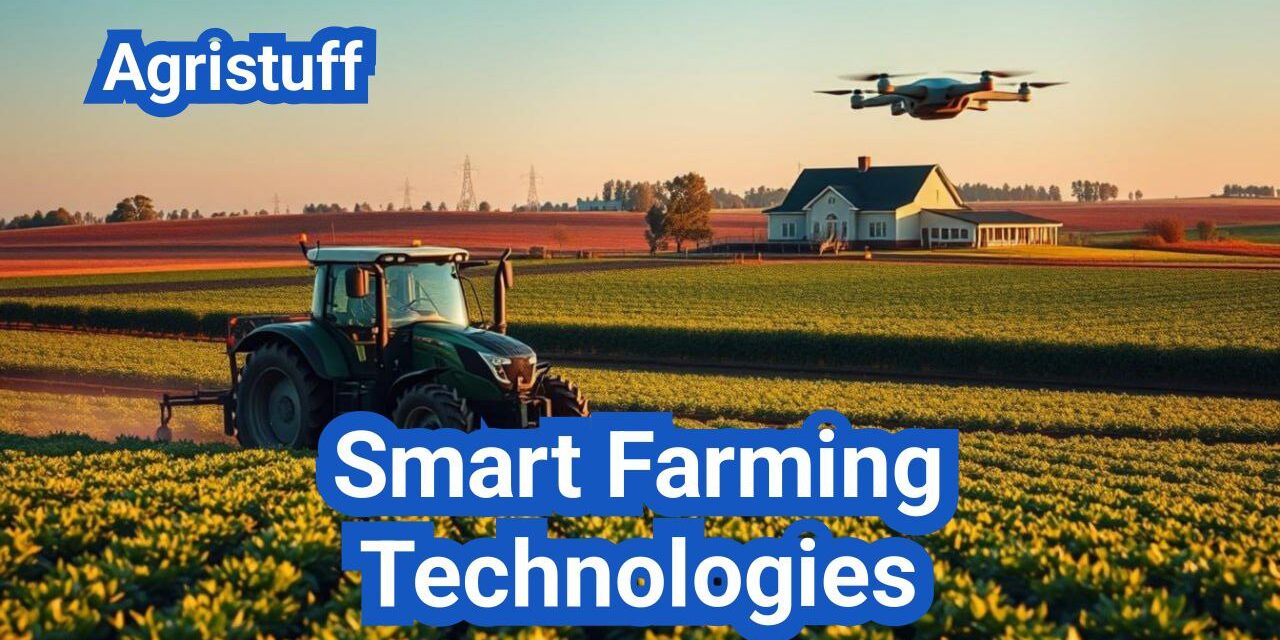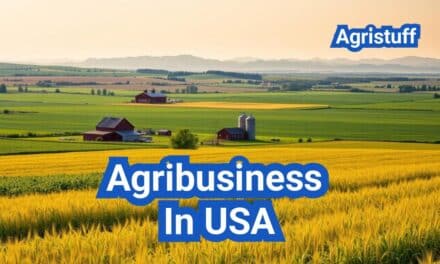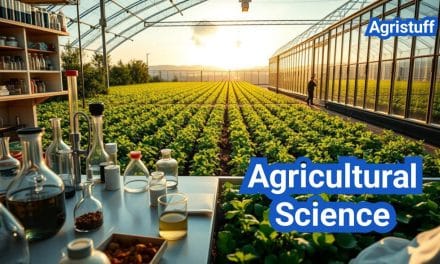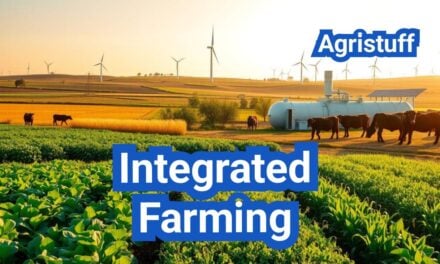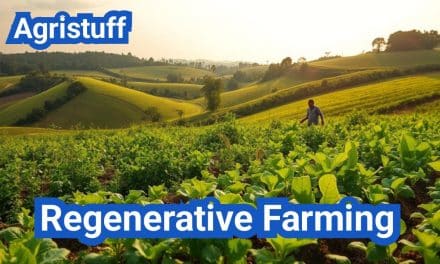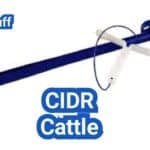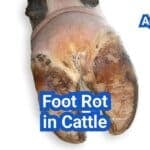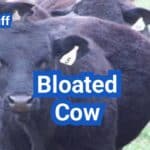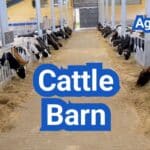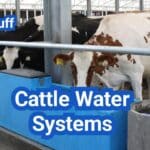The agricultural landscape is undergoing a significant transformation with the advent of precision agriculture and IoT in agriculture. By leveraging the latest advancements in sustainable agriculture technology, farmers can now access a wide range of tools to enhance their operations.
Data-driven farm operations are becoming increasingly important, enabling farmers to make informed decisions and optimize crop yields. By 2025, smart sensors are expected to increase crop yield by up to 30% compared to traditional methods.
The toolkit for farmers in 2025 will be centered around precision agriculture and data-driven decision-making. This will enable them to stay competitive and sustainable in a rapidly changing agricultural landscape.
Key Takeaways
- Precision agriculture is revolutionizing the farming industry.
- IoT in agriculture is enhancing farm operations and crop yields.
- Sustainable agriculture technology is becoming increasingly important.
- Data-driven farm operations are enabling farmers to make informed decisions.
- Smart sensors can increase crop yield by up to 30% by 2025.
The Evolution of Agriculture: From Traditional to Digital Farming
Agriculture is evolving rapidly, with traditional methods giving way to innovative digital farming practices. This transformation is not sudden but rather the culmination of centuries of agricultural innovation.
Historical Context of Agricultural Innovation
The history of agriculture is marked by significant milestones, from the early use of simple tools to the mechanization that began in the Industrial Revolution. Mechanization increased productivity, allowing farms to grow larger and more efficient. The 20th century saw the introduction of chemical fertilizers and pesticides, further boosting crop yields.
The development of precision agriculture in the late 20th century laid the groundwork for today’s digital farming revolution. Techniques such as crop rotation, irrigation management, and soil testing became more sophisticated, setting the stage for the integration of technology in farming.
| Period | Agricultural Innovation | Impact |
|---|---|---|
| Pre-Industrial | Simple tools | Limited productivity |
| Industrial Revolution | Mechanization | Increased efficiency and farm size |
| 20th Century | Chemical fertilizers and pesticides | Higher crop yields |
| Late 20th Century | Precision agriculture | Improved crop management |
The Digital Revolution in Farming
The digital revolution in farming is characterized by the use of advanced technologies such as IoT devices, drones, and satellite imagery. These tools enable farmers to make data-driven decisions, optimizing crop yields and reducing waste.
IoT in agriculture has been particularly transformative, allowing for real-time monitoring of soil moisture, temperature, and crop health.
- IoT devices provide real-time data on farm conditions.
- Drones offer aerial insights into crop health and growth.
- Satellite imagery helps in monitoring large areas and detecting issues early.
As we move towards 2025, the agricultural sector continues to embrace digital farming practices, driven by the need for sustainability and efficiency. The future of farming lies in the ability to harness technology to meet the world’s growing food demands while minimizing environmental impact.
What Are Smart Farming Technologies?
The future of farming is being shaped by smart farming technologies, which combine traditional practices with modern advancements. Smart farming technologies integrate Internet of Things (IoT), artificial intelligence, and data analytics to optimize agricultural practices.
Definition and Core Components
Smart farming technologies refer to the application of advanced technology to improve farming practices. The core components include IoT devices, precision agriculture technology, and data analytics. These components work together to provide farmers with real-time data and insights to make informed decisions.
Some examples of smart farming technologies include:
- Soil moisture sensors
- Weather stations
- GPS-guided equipment
- Drones for crop monitoring
How Smart Farming Differs from Conventional Methods
Smart farming differs significantly from conventional farming methods. While traditional farming relies on general practices and guesswork, smart farming uses data-driven approaches to optimize crop yields and reduce waste. By leveraging technologies like IoT and precision agriculture, farmers can make more precise decisions about planting, irrigation, and harvesting.
The Internet of Things (IoT) in Agriculture
The Internet of Things (IoT) plays a crucial role in smart farming. IoT devices such as farm sensors and weather stations collect data on various factors like soil moisture, temperature, and crop health. This data is then used to optimize farming practices, reduce costs, and improve yields.
IoT applications in agriculture include:
- Monitoring soil conditions
- Predicting weather patterns
- Automating irrigation systems
By embracing IoT and other smart farming technologies, farmers can improve their efficiency, reduce their environmental impact, and increase their profitability.
The Economic Case for Smart Farming
As the agricultural sector continues to evolve, the economic advantages of smart farming technologies are becoming increasingly apparent. The integration of advanced technologies such as IoT devices, GPS, and data analytics is transforming farm operations, leading to improved efficiency and profitability.
ROI Analysis for Different Farm Sizes
The return on investment (ROI) for smart farming technologies can vary significantly based on farm size and the specific technologies adopted. For instance:
- Small farms can benefit from precision irrigation systems, which can lead to water savings and increased crop yields.
- Medium-sized farms may adopt GPS-guided equipment, reducing overlap and input costs.
- Large farms can leverage extensive data analytics platforms to optimize crop management and predict potential issues.
A detailed ROI analysis is crucial for farmers to understand the potential financial benefits of adopting smart farming technologies.
Cost-Benefit Considerations
When evaluating the adoption of smart farming technologies, farmers must consider both the costs and benefits. Key factors include:
- Initial Investment: The upfront cost of purchasing and installing new technologies.
- Operational Savings: Reductions in input costs, such as water and fertilizers, due to more efficient use.
- Increased Productivity: Potential increases in crop yields and quality.
- Maintenance and Support: Ongoing costs associated with maintaining and updating the technologies.
A thorough cost-benefit analysis helps farmers make informed decisions about which technologies to adopt.
Calculating Technology Implementation Costs
Calculating the total cost of implementing smart farming technologies involves several steps:
- Assessing the initial purchase price of the technology.
- Considering installation and training costs.
- Factoring in ongoing maintenance and support expenses.
- Evaluating any potential costs associated with integrating new technologies with existing systems.
By carefully calculating these costs, farmers can better understand the financial implications of adopting smart farming technologies.
Precision Agriculture: The Foundation of Smart Farming

At the heart of smart farming lies precision agriculture, a methodology that optimizes crop yields and reduces waste. This approach leverages advanced technologies to manage farms more effectively.
Precision agriculture encompasses several key technologies and practices that enable farmers to make more informed decisions. By adopting these methods, farmers can improve crop health, reduce environmental impact, and enhance overall farm productivity.
Variable Rate Technology (VRT)
Variable Rate Technology (VRT) is a critical component of precision agriculture. VRT allows farmers to apply inputs such as fertilizers, pesticides, and irrigation at varying rates across a field, based on specific conditions. This targeted approach ensures that crops receive exactly what they need, when they need it, thereby optimizing yields and minimizing waste.
The implementation of VRT involves creating detailed maps of the farm, which are then used to program agricultural equipment to apply inputs at the correct rate. This technology not only improves crop outcomes but also reduces the overuse of resources, leading to cost savings and environmental benefits.
Site-Specific Management
Site-specific management is another crucial aspect of precision agriculture. This approach involves managing crops based on their specific needs and conditions within different areas of the farm. By doing so, farmers can address variability in soil type, moisture levels, and crop health, among other factors.
Site-specific management relies on data collected from various sources, including soil sensors, GPS, and remote sensing technologies. This information is used to create detailed prescriptions for crop management, ensuring that each area of the farm receives the appropriate treatment.
PWM Sprayers and Application Technology
Pulse Width Modulation (PWM) sprayers represent a significant advancement in application technology. PWM sprayers allow for more precise control over the application of pesticides and other chemicals, reducing drift and ensuring that crops receive the correct dosage.
The use of PWM sprayers, combined with other precision agriculture technologies, enables farmers to achieve more consistent and effective crop protection. This not only improves crop yields but also minimizes the environmental impact of farming operations.
Essential GPS and Navigation Systems
In the realm of smart farming, GPS technology plays a pivotal role in optimizing farm operations. The precision and efficiency brought about by GPS and navigation systems are transforming the agricultural landscape.
Global Positioning System (GPS) technology has become indispensable in modern agriculture, enabling farmers to make data-driven decisions and streamline their operations. The accuracy provided by GPS allows for precise planting, spraying, and harvesting, reducing waste and improving crop yields.
RTK GPS Technology
Real-Time Kinematic (RTK) GPS technology offers centimeter-level accuracy, revolutionizing the precision with which farmers can navigate their fields. This level of precision is crucial for applications such as autosteering tractors and precision planting.
“RTK GPS has been a game-changer for our farm. The accuracy it provides allows us to optimize our planting and reduce overlap, significantly improving our efficiency.” – John Doe, Farmer
Autosteer and Guidance Systems
Autosteer systems utilize GPS data to automatically steer tractors and other farm equipment, reducing driver fatigue and improving the accuracy of farming operations. Guidance systems provide visual cues to the operator, helping to maintain precise control over equipment.
| Feature | Manual Steering | Autosteer System |
|---|---|---|
| Accuracy | Variable, dependent on operator skill | Centimeter-level accuracy |
| Operator Fatigue | High | Reduced |
| Overlap Reduction | Limited | Significant reduction |
Implementation Steps for GPS Integration
Integrating GPS technology into farming operations involves several key steps:
- Assessing the farm’s specific needs and determining the appropriate GPS technology.
- Selecting compatible hardware and software.
- Installing and calibrating the GPS system.
- Training personnel on the use and maintenance of the GPS technology.
By following these steps, farmers can effectively leverage GPS and navigation systems to enhance their operations, improving both efficiency and productivity.
Farm Sensors and IoT Integration

The integration of farm sensors and IoT technology is revolutionizing agricultural practices by enabling real-time monitoring and data-driven decision-making. This section explores the critical components of farm sensors and IoT integration, including their applications and benefits in modern agriculture.
Soil Moisture Sensors
Soil moisture sensors are a crucial tool in precision agriculture, allowing farmers to monitor soil moisture levels accurately. This information helps in optimizing irrigation schedules, reducing water waste, and improving crop health.
Benefits of Soil Moisture Sensors:
- Water conservation through optimized irrigation
- Improved crop yields due to consistent moisture levels
- Reduced energy consumption for pumping water
Weather Stations and Environmental Monitoring
Weather stations and environmental monitoring systems provide critical data on weather conditions, soil temperature, and other environmental factors. This information is vital for making informed decisions about planting, harvesting, and crop management.
| Environmental Factor | Importance in Agriculture |
|---|---|
| Temperature | Affects crop growth and development |
| Humidity | Influences disease prevalence and pest activity |
| Soil Moisture | Critical for irrigation management |
ISOBUS and Equipment Connectivity
ISOBUS is a standardized communication protocol that enables different agricultural equipment to communicate with each other seamlessly. This interoperability is essential for integrating various farm sensors and IoT devices into a cohesive system.
The adoption of ISOBUS and other equipment connectivity standards is crucial for the future of smart farming, as it allows for more efficient data collection and equipment control.
Drone Technology in Modern Agriculture

The agricultural landscape is witnessing a significant transformation with the integration of drone technology. Drones, or unmanned aerial vehicles (UAVs), are increasingly being adopted in farming for their ability to enhance productivity, reduce costs, and improve crop yields.
Regulatory Framework: Part 107 and Part 137
The use of drones in agriculture is governed by specific regulations to ensure safety and compliance. In the United States, the Federal Aviation Administration (FAA) regulates drone operations under Part 107 for commercial use and Part 137 for agricultural operations. Understanding these regulations is crucial for farmers and agricultural businesses looking to integrate drone technology into their operations.
Part 107 sets forth rules for the commercial operation of drones, including requirements for pilot certification, drone registration, and operational limitations. Part 137, on the other hand, pertains specifically to aerial application operations, including those conducted by drones. Compliance with these regulations is essential for the safe and legal operation of drones in agricultural settings.
Mapping and Crop Monitoring Applications
One of the primary applications of drone technology in agriculture is in mapping and crop monitoring. Drones equipped with high-resolution cameras and sensors can capture detailed images of fields, allowing farmers to monitor crop health, detect issues early, and make informed decisions about irrigation, fertilization, and pest control.
The data collected by drones can be used to create detailed maps of fields, highlighting areas of stress or variability. This information can be invaluable for precision agriculture, enabling targeted interventions that improve crop yields and reduce waste.
Spray Drones and Precision Application
Spray drones represent another significant application of drone technology in agriculture. These drones are designed to apply pesticides, herbicides, and fertilizers with precision, reducing the amount of chemicals used and minimizing environmental impact.
Spray drones can operate in areas difficult to access with traditional machinery, and they can apply treatments at the optimal time, regardless of wind or other weather conditions. This precision application capability not only enhances efficiency but also contributes to more sustainable farming practices.
Satellite Imagery and Remote Sensing

Remote sensing technologies, particularly satellite imagery, are transforming agricultural practices by offering insights into crop conditions and soil moisture levels. This section explores the role of satellite imagery in precision agriculture, focusing on its applications in crop health monitoring and water management.
NDVI and Crop Health Monitoring
The Normalized Difference Vegetation Index (NDVI) is a widely used metric derived from satellite imagery to assess crop health. NDVI measures the difference between near-infrared and visible light reflected by crops, providing insights into vegetation vigor and density. By analyzing NDVI data, farmers can identify stressed areas, detect nutrient deficiencies, and optimize crop management strategies.
Benefits of NDVI:
- Early detection of crop stress
- Improved crop yield predictions
- Enhanced decision-making for irrigation and fertilization
OpenET and Evapotranspiration Management
OpenET is an innovative platform that utilizes satellite data to estimate evapotranspiration (ET), the process by which water is transferred from the land to the atmosphere through evaporation and plant transpiration. Accurate ET data is crucial for water management in agriculture, as it helps farmers optimize irrigation schedules and reduce water waste.
Key features of OpenET include:
- Satellite-based ET estimation
- Field-level water usage data
- Integration with existing irrigation management systems
Accessing and Interpreting Satellite Data
Access to satellite imagery and remote sensing data has become more accessible to farmers through various platforms and services. Interpreting this data requires an understanding of the underlying technologies and analytical tools. Farmers can leverage this information to make data-driven decisions, improving crop yields and reducing environmental impact.
Steps for accessing and interpreting satellite data:
- Identify reliable data sources and platforms
- Understand the analytical tools and metrics used (e.g., NDVI, ET)
- Integrate satellite data with other farm management data
- Apply insights to optimize crop management and irrigation strategies
Implementing Smart Farming Technologies for Sustainable Development

The integration of smart farming technologies is a significant step towards sustainable development in agriculture. As the global population continues to grow, the need for sustainable agricultural practices becomes increasingly important. Smart farming technologies offer a range of solutions that can help farmers improve crop yields, reduce waste, and promote environmental stewardship.
Step-by-Step Implementation Guide
Implementing smart farming technologies requires a strategic approach. Here is a step-by-step guide to help farmers get started:
- Assess your farm’s specific needs and identify areas where technology can improve efficiency.
- Choose the right technologies, such as precision agriculture tools, IoT devices, or drone technology.
- Develop a comprehensive plan for integrating these technologies into your existing operations.
- Invest in training for yourself and your staff to ensure effective use of the new technologies.
- Monitor and evaluate the impact of these technologies on your farm’s sustainability and productivity.
Integration with Existing Farm Operations
Successful integration of smart farming technologies depends on how well they are incorporated into existing farm operations. This involves:
Assessing Compatibility: Ensuring that new technologies are compatible with your current equipment and systems.
Data Management: Developing a robust data management system to handle the influx of data from various sources.
Measuring Sustainability Improvements
To measure the effectiveness of smart farming technologies in improving sustainability, farmers can track various metrics, including:
- Water usage and conservation.
- Reduction in chemical inputs.
- Soil health improvements.
- Biodiversity enhancements.
By following this implementation guide and focusing on integration and measurement, farmers can harness the power of smart farming technologies to achieve sustainable development goals.
Precision Livestock Farming Technologies

Precision livestock farming is revolutionizing the way we manage animal health and productivity. By integrating advanced technologies, farmers can now monitor and manage their livestock more effectively, leading to improved animal welfare and increased efficiency.
Rumen Bolus and Animal Health Monitoring
Rumen bolus technology involves using a device that is placed in the rumen of a cow to monitor various health parameters. This real-time monitoring allows farmers to track the health of their livestock more effectively, enabling early intervention in case of any health issues.
The data collected from rumen bolus devices can include temperature, pH levels, and other vital signs. By analyzing this data, farmers can make informed decisions about the health and nutrition of their animals, leading to improved overall herd health.
Automated Feeding Systems
Automated feeding systems are another key component of precision livestock farming. These systems allow for the precise distribution of feed to animals, reducing waste and ensuring that each animal receives the right amount of nutrition.
- Improved feed efficiency
- Reduced labor costs
- Enhanced animal health through tailored nutrition
Livestock Tracking and Management
Livestock tracking technologies enable farmers to monitor the location and behavior of their animals. This information can be crucial for managing grazing patterns, detecting health issues early, and improving overall farm management.
By using GPS tracking devices and other monitoring systems, farmers can gain valuable insights into their livestock’s behavior and health, allowing for more informed decision-making.
Artificial Intelligence in Agricultural Decision-Making
Artificial intelligence is transforming the agricultural landscape by providing farmers with data-driven insights for informed decision-making. The use of AI in agriculture is becoming increasingly prevalent, with applications ranging from predictive analytics to automated farming equipment.
The integration of AI technologies in farming practices enables farmers to make more precise decisions, reducing waste and improving productivity. This section will explore the various aspects of AI in agricultural decision-making, including predictive analytics, responsible AI implementation frameworks, and practical applications for farms of all sizes.
Predictive Analytics for Crop Management
Predictive analytics is a crucial application of AI in agriculture, allowing farmers to forecast crop yields, detect potential issues, and optimize resource allocation. By analyzing historical data, weather patterns, and soil conditions, AI algorithms can provide accurate predictions that help farmers make informed decisions.
For instance, predictive models can identify the likelihood of pest infestations or disease outbreaks, enabling farmers to take proactive measures. This not only reduces the environmental impact of farming but also improves crop health and productivity.
NIST AI RMF Framework for Responsible Implementation
The NIST AI Risk Management Framework (AI RMF) provides a structured approach to managing AI-related risks. For agricultural applications, this framework is crucial in ensuring that AI systems are implemented responsibly and securely.
By following the NIST AI RMF guidelines, farmers and agricultural technology providers can assess and mitigate potential risks associated with AI adoption. This includes ensuring data privacy, maintaining system security, and promoting transparency in AI decision-making processes.
Practical AI Applications for Farms of All Sizes
AI technologies are scalable and can be applied to farms of various sizes, from small-scale operations to large agricultural enterprises. Practical applications include:
- Automated crop monitoring and yield prediction
- Precision irrigation management
- Soil health analysis and recommendations
- Equipment maintenance prediction and optimization
| AI Application | Farm Size | Benefits |
|---|---|---|
| Crop Monitoring | Small, Medium, Large | Improved yield prediction, reduced labor costs |
| Precision Irrigation | Medium, Large | Water conservation, optimized crop growth |
| Soil Health Analysis | Small, Medium | Informed fertilizer application, improved soil fertility |
By embracing AI technologies, farmers can enhance their decision-making processes, improve operational efficiency, and contribute to sustainable agricultural practices.
Data Management and Interoperability

As smart farming continues to evolve, the importance of data management and interoperability cannot be overstated. The ability to collect, analyze, and share data across different platforms and systems is crucial for maximizing the benefits of smart farming technologies.
Farm Data Platforms
Farm data platforms serve as the central hub for managing agricultural data. These platforms integrate data from various sources, including sensors, drones, and satellite imagery, providing farmers with a comprehensive view of their operations.
Key features of farm data platforms include:
- Data aggregation and integration
- Advanced analytics and insights
- User-friendly interfaces for decision-making
- Data sharing and collaboration tools
According to a report by AgFunder, the digital agriculture market is expected to grow significantly, driven in part by the adoption of farm data platforms.
Interoperability Standards and Protocols
Interoperability is critical for ensuring that different devices and systems can communicate effectively. In smart farming, this means that data can be shared seamlessly between various technologies, such as tractors, drones, and irrigation systems.
Some key interoperability standards include:
| Standard | Description | Application |
|---|---|---|
| ISO 11783 | A standard for tractor and implement communication | Equipment connectivity |
| ADAPT | A data exchange standard for agricultural software | Data sharing between farm management software |
| AgGateway | A framework for interoperability in agriculture | Data exchange between different agricultural systems |
As noted by
“Interoperability is key to unlocking the full potential of smart farming technologies. By enabling different systems to work together seamlessly, we can create more efficient and productive farming operations.”
— John Deere, Smart Farming Report
Data Privacy and Ownership Considerations
As the use of smart farming technologies grows, so does the importance of addressing data privacy and ownership concerns. Farmers need to understand who owns the data generated by their operations and how it is being used.
Key considerations include:
- Data ownership and control
- Data sharing agreements
- Data security measures
- Compliance with relevant regulations
By prioritizing data management and interoperability, farmers can unlock the full potential of smart farming technologies, leading to more efficient, productive, and sustainable agricultural practices.
Sustainable Agriculture Through Smart Technologies

By leveraging smart technologies, farmers can significantly improve the sustainability of their agricultural practices. Smart farming technologies offer a range of tools and techniques that can help reduce environmental impact while maintaining or increasing productivity.
Nutrient Management (590 Standard)
Nutrient management is a critical aspect of sustainable agriculture, and the 590 Standard provides a framework for farmers to follow. This standard emphasizes the importance of balancing nutrient inputs with crop needs, minimizing waste, and reducing environmental impact. Smart technologies can play a key role in nutrient management by providing farmers with data-driven insights into soil health and crop requirements.
Precision agriculture techniques, such as variable rate application, enable farmers to apply nutrients more efficiently, reducing waste and environmental pollution. By adopting these practices, farmers can not only improve the sustainability of their operations but also potentially increase their profitability.
COMET-Farm and Carbon Sequestration
COMET-Farm is a valuable tool for farmers looking to quantify their carbon footprint and identify opportunities for carbon sequestration. This web-based application allows farmers to assess the impact of different conservation practices on their carbon emissions and soil health. By using COMET-Farm, farmers can make informed decisions about their land management practices, contributing to a more sustainable agricultural system.
Carbon sequestration is an important aspect of sustainable agriculture, as it can help mitigate climate change by reducing atmospheric CO2 levels. Smart technologies, including COMET-Farm, can help farmers adopt practices that promote carbon sequestration, such as no-till or cover cropping.
Drift Reduction Technology for Responsible Application
Drift reduction technology is another important tool for promoting sustainable agriculture practices. By minimizing the drift of agricultural chemicals, farmers can reduce the environmental impact of their operations and protect nearby ecosystems. Drift reduction technology can be integrated with other precision agriculture techniques, such as GPS guidance and precision spraying, to further enhance the efficiency and sustainability of farming practices.
The use of drift reduction technology can also help farmers comply with regulatory requirements and improve their overall application efficiency. By adopting these technologies, farmers can contribute to a more sustainable food system while maintaining their productivity and profitability.
Funding and Support for Technology Adoption
The adoption of smart farming technologies is supported by numerous funding initiatives designed to help farmers modernize their practices. These programs are crucial in offsetting the costs associated with implementing new technologies, making it more feasible for farmers of all scales to integrate smart farming solutions into their operations.
EQIP Cost-Share Programs
The Environmental Quality Incentives Program (EQIP) is a key initiative by the USDA that provides financial assistance to farmers to implement conservation practices, including the adoption of smart farming technologies. EQIP offers cost-share payments to help farmers cover the costs of purchasing and installing new equipment and technologies.
Key Benefits of EQIP:
- Cost-share payments for technology adoption
- Technical assistance for implementation
- Priority funding for conservation practices
Other Federal and State Incentives
Beyond EQIP, various other federal and state programs offer incentives for farmers to adopt smart farming technologies. These may include tax credits, grants, and low-interest loans designed to support agricultural innovation and sustainability.
| Program | Description | Benefits |
|---|---|---|
| NRCS Conservation Innovation Grants | Grants for innovative conservation projects | Funding for pilot projects and technology testing |
| State-specific Agricultural Grants | Grants for agricultural innovation and sustainability | Financial support for state-level projects |
Private Sector Financing Options
In addition to government programs, private sector financing options are increasingly available to support the adoption of smart farming technologies. These may include loans, leasing options, and other financial products tailored to the agricultural sector.
Farmers can explore these various funding and support options to find the best fit for their needs, enabling them to successfully adopt and integrate smart farming technologies into their operations.
Building Your Smart Farming Strategy
As we look towards 2025, farmers can leverage smart farming technologies to build a more sustainable and productive agricultural future. A well-planned smart farming strategy is crucial for optimizing data-driven farm operations and staying ahead in the agricultural industry.
By integrating agricultural technology, such as precision agriculture, GPS navigation, and IoT sensors, farmers can make informed decisions, reduce waste, and improve crop yields. A comprehensive smart farming strategy will enable farmers to stay competitive, improve sustainability, and drive business growth.
To build a successful smart farming strategy, farmers should focus on implementing the right technologies, managing data effectively, and staying up-to-date with the latest advancements in smart farming technologies. By doing so, they can create a more efficient, productive, and sustainable farming operation that is poised for success in 2025 and beyond.
FAQ
What are smart farming technologies?
Smart farming technologies refer to the use of advanced technologies such as precision agriculture, IoT, and AI to improve agricultural productivity and sustainability.
How do smart farming technologies differ from conventional farming methods?
Smart farming technologies differ from conventional farming methods in their use of data-driven decision-making, precision application of inputs, and automation of farming operations.
What is the role of IoT in agriculture?
IoT plays a crucial role in agriculture by enabling the collection and analysis of data from various sources such as soil moisture sensors, weather stations, and crop monitoring systems.
What is precision agriculture?
Precision agriculture is an approach to farming that involves the use of advanced technologies such as GPS, GIS, and remote sensing to optimize crop yields and reduce waste.
How can drone technology be used in agriculture?
Drone technology can be used in agriculture for crop monitoring, soil analysis, and precision application of inputs such as fertilizers and pesticides.
What is the importance of GPS and navigation systems in smart farming?
GPS and navigation systems are essential in smart farming as they enable farmers to accurately navigate their fields, optimize crop yields, and reduce waste.
How can artificial intelligence be used in agricultural decision-making?
Artificial intelligence can be used in agricultural decision-making to analyze data from various sources, predict crop yields, and optimize farming operations.
What are the benefits of precision livestock farming technologies?
Precision livestock farming technologies can improve animal health, reduce disease, and optimize feeding operations.
How can farmers access funding and support for adopting smart farming technologies?
Farmers can access funding and support for adopting smart farming technologies through programs such as EQIP cost-share programs, private sector financing options, and other federal and state incentives.
What is the significance of data management and interoperability in smart farming?
Data management and interoperability are crucial in smart farming as they enable farmers to collect, analyze, and share data from various sources, and make informed decisions.
How can smart farming technologies support sustainable agriculture practices?
Smart farming technologies can support sustainable agriculture practices by optimizing the use of inputs, reducing waste, and promoting environmentally friendly practices.
What are the key considerations for implementing smart farming technologies?
Key considerations for implementing smart farming technologies include assessing farm needs, selecting the right technologies, and integrating them with existing farm operations.
Conclusion of: Smart Farming Technologies
Why this year is the year to standardize your smart farming technologies
Across U.S. row-crop, specialty, and livestock operations, smart farming technologies have moved from “nice to have” to “must have.” In 2025, the economic and regulatory environment rewards farms that use data to reduce passes, sharpen input placement, and prove stewardship. Guidance, sensors, variable-rate, and analytics now integrate into everyday workflows, turning variability into a plan you can execute with fewer surprises. The bottom line: the farms that measure and automate with smart farming technologies tend to keep more of every dollar and weather volatility better than those that don’t. USDA ERS: Digital Agriculture overview
What counts as smart farming technologies (and what doesn’t)
In practice, smart farming technologies are systems—sensors, connectivity, software, analytics, and machines—that help you make a better in-field decision at the right time, rate, and place. Tools that merely log data but never change a decision aren’t pulling their weight. Start with a simple test: does the tool improve timing (when), placement (where), or rate (how much)? If it doesn’t influence at least one of those, it probably isn’t among the smart farming technologies you need in 2025. USDA NIFA: Digital Agriculture
Interoperability first: make smart farming technologies speak the same language
Before buying more smart farming technologies, fix the “data plumbing.” ISOBUS (ISO 11783) allows tractors, implements, and terminals to interoperate, so prescription files, task data, and section control work across brands. That means fewer memory sticks, fewer setup errors, and simpler training for seasonal operators. Interoperability also future-proofs your fleet so you can add new smart farming technologies without rebuilding your whole stack. AEF: ISOBUS (ISO 11783)
Data rights and trust: govern your smart farming technologies like a business system
As you add smart farming technologies, treat farm data like any other critical asset. Clarify who can access raw and processed data, where it’s stored, how it’s backed up, and how you audit vendor behavior. Establishing internal policies—much like IT policies in other industries—keeps contracts clear and minimizes downstream headaches when you switch platforms. This governance mindset strengthens the ROI of your smart farming technologies because better data stewardship yields better decisions. NIST Privacy Framework
Guidance and autosteer: the bedrock of smart farming technologies
GNSS guidance and autosteer are the highest-confidence smart farming technologies for immediate payback. Sub-inch RTK repeatability tightens swaths, reduces overlap, and opens the door to controlled traffic, strip-till, and high-value bed systems. Operators fatigue less and perform more consistently, and your input maps align better with the actual pass. If you adopt only one category of smart farming technologies this year, start here. USDA ERS: Digital tech adoption in U.S. farming
Variable-rate and prescriptions: make smart farming technologies pay on inputs that matter
To convert maps into money, apply smart farming technologies where your spend is biggest—seed, nitrogen, phosphorus, and irrigation time. Variable-rate prescriptions should be anchored in soil tests, multi-year yield, elevation, and economics, not just pretty colors. Align with conservation and agronomic standards so your smart farming technologies reinforce profitability and compliance together. NRCS: Conservation Practice Standards (incl. Nutrient Management 590)
Satellites and crop indices: the wide-angle lens in smart farming technologies
Frequent satellite imagery is one of the most cost-effective smart farming technologies. Indices like NDVI/NDRE help you validate emergence, spot water or nutrient stress, and refine management zones at scale. The long Landsat archive gives historical context, while higher-frequency constellations flag issues between scouting trips. Use imagery alongside ground truth so your smart farming technologies drive actions, not just pretty maps. USGS: Landsat & Agriculture
Drones for scouting: know the rules that govern smart farming technologies in the air
Uncrewed aircraft extend smart farming technologies into low-altitude scouting for stand counts, weed escapes, and canopy gaps. In the U.S., most farm drone work is commercial, so flying under Part 107 rules is the norm. Ensure a certified remote pilot, airspace checks, visual line-of-sight, and aircraft registration where required, so your smart farming technologies deliver insight without regulatory headaches. FAA: Part 107 Small UAS Rule
Drone spraying and spreading: a different regulatory lane for smart farming technologies
When drones go from scouting to applying, you’ve crossed into agricultural aircraft operations. These smart farming technologies fall under Part 137 with additional certifications, exemptions, and operational procedures. Treat it like getting a second license for your program, and document everything so insurance, neighbors, and regulators are comfortable with your plan. FAA: Dispensing Chemicals from UAS (Part 137)
Soil moisture sensors: stop guessing with smart farming technologies
Capacitance probes and granular matrix sensors translate water status into irrigation decisions zone by zone. Placed at rooting depths and tied to telemetry, these smart farming technologies help you schedule irrigations that minimize stress and pumping costs. Calibrate by soil type, maintain clean installations, and validate with crop response to keep the system honest. University of Minnesota Extension: Soil Moisture Sensors
ET tools and OpenET: water intelligence within smart farming technologies
Evapotranspiration platforms estimate crop water use by field and stage, turning “how long should I run?” into a defensible number. As part of your smart farming technologies, ET dashboards pair nicely with soil sensors: sensors tell you where you are, ET tells you where you’re headed. Together they prevent both stress and over-watering. USGS: OpenET for Farmers & Ranchers
Sprayers that think: PWM and turn compensation as smart farming technologies
Pulse-width modulation and turn compensation keep GPA stable through speed changes and corners, while enabling instant section control and spot applications. These smart farming technologies reduce off-target movement, save product, and make label compliance easier—especially when paired with good nozzles and boom height control. Penn State Extension: PWM Sprayers
Labels, droplets, and drift: compliance built into smart farming technologies
No technology outruns the label. Use nozzle selection guides, pressure/droplet tools, and weather windows so your smart farming technologies keep sprays on target. Document tips, pressures, wind, and humidity for every job. That recordkeeping reduces risk and supports stewardship claims with buyers and auditors. EPA: Understanding Pesticide Labels
Precision livestock: wearables and vision as smart farming technologies
Collars, tags, boluses, milk sensors, and computer vision bring smart farming technologies to the parlor and pasture. Earlier heat detection, rapid disease flags, and automated body-condition estimates mean fewer lost days open and faster interventions. Focus on battery life, connectivity in remote paddocks, and dashboards your team will actually use. USDA NIFA: Precision Livestock Farming
Cybersecurity: protect the connective tissue of smart farming technologies
Connected displays, RTK bases, farm Wi-Fi, and cloud dashboards expand your attack surface. Basic hygiene—multi-factor authentication, timely patching, network segmentation, and regular backups—keeps smart farming technologies running safely. Train staff to spot phishing; a single bad click can ground operations during critical windows. CISA: Cyber Essentials
AI on the farm: governance for computer vision and modeling in smart farming technologies
From weed detection to yield forecasts, AI is now embedded in many smart farming technologies. Put guardrails around model selection, validation, and monitoring to prevent bias and drift from eroding trust. Document how predictions are used and establish thresholds where human oversight kicks in. NIST: AI Risk Management Framework
Funding and cost-share: align smart farming technologies with conservation outcomes
When your smart farming technologies improve resource outcomes—water, nutrients, soil health—USDA programs can defray costs. Work with your local NRCS office on planning, specs, and practice standards so proposals are competitive and implementation stays on plan. NRCS: EQIP Program
Rollout plan: pilot, document, and scale smart farming technologies
Don’t try everything at once. Pilot smart farming technologies on a representative field or herd group. Document settings, ROI, and failure points, then scale and train. A written conservation and operations plan anchors the process across seasons and staff changes. NRCS: Conservation Planning Basics
Final thought
Smart farming technologies are no longer experimental; they’re the operating system of modern agriculture. Start with interoperability and guidance, target the biggest input inefficiencies next, and weave cybersecurity and AI governance into the plan. The farms that win in 2025 will measure, decide, and act—consistently and securely. NASA Applied Sciences: Agriculture
Sources & References
• AEF: ISOBUS (ISO 11783)
• NIST Privacy Framework
• FAA: Dispensing Chemicals from UAS (Part 137)
• USGS: OpenET for Farmers & Ranchers
• EPA: Pesticide Labels
• USDA NIFA: Precision Farming
• CISA: Cyber Essentials
• NIST: AI Risk Management Framework
• NRCS: EQIP Program
• NASA Applied Sciences: Agriculture

